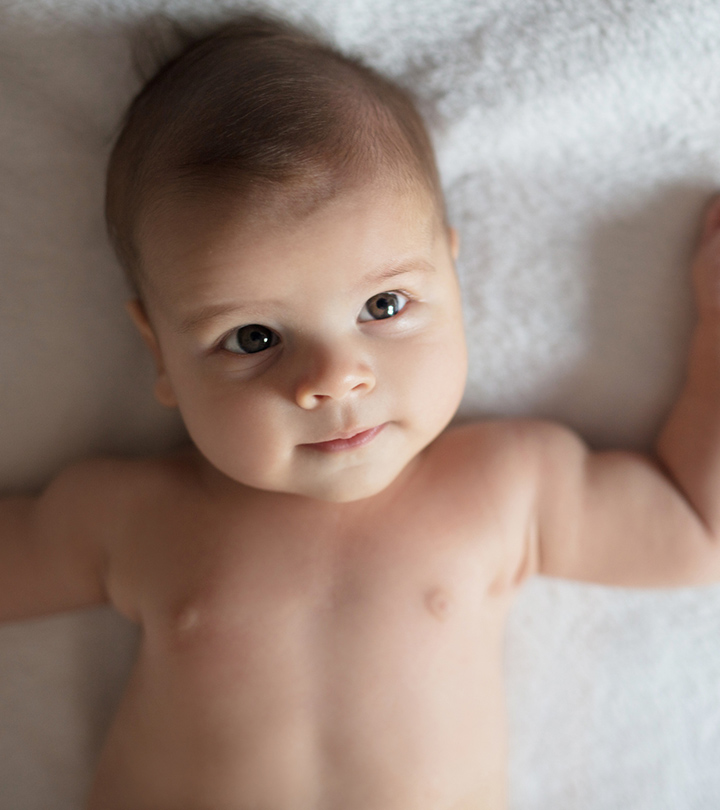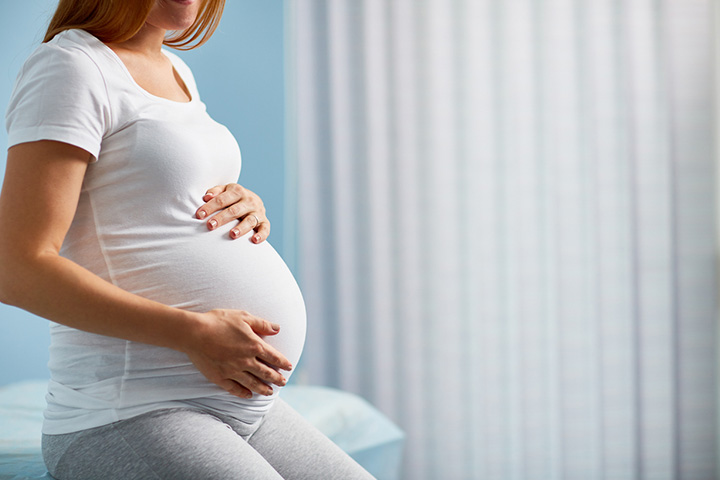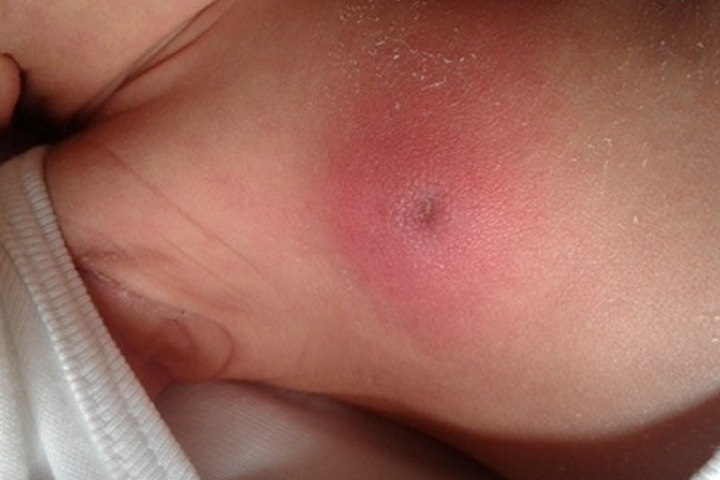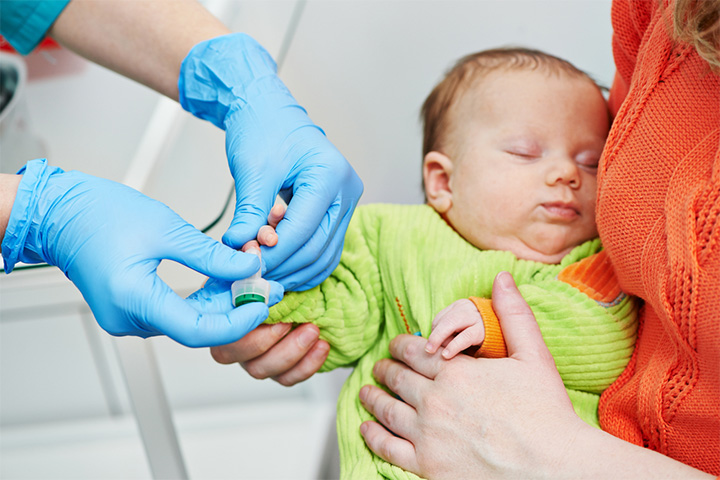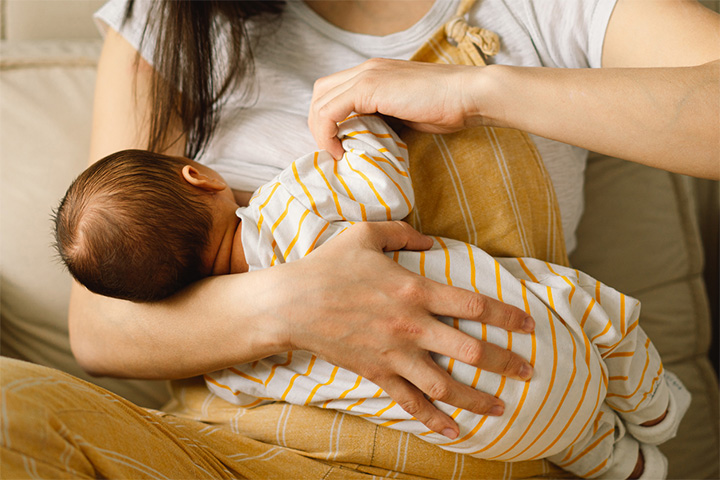Enlargement or lumps in a baby’s breasts are common among newborns and are usually harmless. The condition may result in visible lumps under the nipple in one or both breasts, and it can affect boys and girls alike. In most cases, such breast lumps subside without requiring treatment. However, you may consult a pediatrician to rule out any underlying issues.
Keep reading the post to learn about the causes of baby breast lumps, when they disappear, and when to consult a doctor.
Causes Of Breast Lumps And Enlargement In Babies
The following factors may lead to the formation of breast lumps in babies.
1. Maternal hormonal changes
During pregnancy, there is an increase in the levels of estrogeniXHormone responsible for the development of reproductive system and sexual characteristics. hormone, which could pass into the baby inside the womb (1). The hormone’s effects could persist after birth, and some babies may develop breast lumps a few days after birth. A mother will also produce high levels of prolactin hormone, which enables milk production in her. Prolactin may also pass into the baby inside the womb, causing breast lumps after birth. Some babies may even secrete a bit of breast milk, also called Witch’s milk, due to the effects of the hormone (2).
Maternal hormones are the most common cause of baby breast lumps. Studies suggest that maternal estrogen usually causes some degree of breast enlargement in nearly 70% of newborns (3).
2. Isolated premature thelarche
Premature thelarche is the condition where a girl shows breast development before the age of eight years (4). Breast enlargement can occur even without early puberty, giving the appearance of breast development in infants and toddlers (5).
Isolated premature thelarche usually occurs due to maternal hormones. Some rare causes include ovarian cysts and precocious puberty.
3. Medications
If the mother is exposed to certain medications during pregnancy, it may cause a surge in hormones. These hormones could pass into the baby and lead to the formation of breast lumps in newborns. In rare cases, a baby might develop breast lumps as a side effect of a medicine.
4. Infections and disorders
In rare cases, infections and disorders may lead to the formation of breast lumps in babies. Babies who experience endocrine disorders, such as thyroid disorders, may experience premature thelarche with precocious puberty (6). Some less common causes of baby breast lumps include problems with the central nervous system, genetic disorders, and breast tumors (7).
Neonatal mastitis (infection of the breasts) may cause swelling beneath the nipples (8). The causative agents of the infection are similar to those seen in mastitis in adults. Staphylococcus and Streptococcus bacteria are some of the leading causes. A baby with breast lumps due to a bacterial infection will generally display other signs, such as fever, fussiness, and lethargy.
5. Congenital deformities
Some babies may experience congenitaliXCondition that is present at birth and may be inherited or acquired. deformities in the nipple or the tissues of the chest (9). It may cause the appearance of enlarged breasts. In rare cases, the baby might be born with a benign breast tumor or vascular (blood vessel-related) deformations, which may render the breast a swollen appearance.
When Do Breast Lumps In A Baby Go Away?
Breast lumps due to maternal hormones usually subside within two weeks (1). The reduction of breast lumps due to other causes may depend on several factors, such as the type of cause, the severity of the cause, and if the condition requires treatment. In most cases, the appropriate treatment or management causes the breast lumps to go away within days to weeks.
Certain causes, such as congenital deformities and severe endocrine disorders, may require extensive long-term treatment. You may speak to a pediatrician to determine the treatment and the prognosis of the condition.
When To Consult The Doctor?
Dr. Lauren M Chiriboga, a general pediatrician from Nicklaus Children’s Hospital in Miami, Florida, says, “Breast lumps in babies typically do not require treatment. Their evaluation and possible treatment may be warranted in the case of concurrent symptoms, such as bleeding or discharge from the nipple, redness or warmth of the overlying skin, fever, or severe asymmetry of the nipples or breast area.”
A pediatrician is likely to assess the presence of any breast anomalies at birth and during a routine check-up.
In the following cases, you may consult a pediatrician for breast lump evaluation in infants.
- The lumps do not subside after two weeks.
- The lumps constantly enlarge.
- You notice redness on the swollen breast.
- You notice nodules on the enlarged breasts.
- The nipples ooze pus.
- The baby itches the breast lump often.
- The baby has signs of infection, such as fever, fussiness, and loss of appetite.
The doctor may advise tests, such as blood tests, mammography, and magnetic resonance imaging (MRI), depending on the severity of signs and symptoms. Breast lumps due to maternal hormones do not require any treatment. Other causes of breast enlargement may require appropriate treatment.
Dos And Don’ts With Breast Lumps In Babies
Keep in mind the following points if your baby has enlarged breasts.
- Never pinch the lumps as it may cause irritation and infection.
- Do not squeeze the milky liquid or the Witch’s milk. Let the secretion subside naturally.
- Clean any secretion from breasts with a moist, soft cloth.
- Keep the nipple and the surrounding skin clean.
- Maintain the usual feeding pattern for the baby.
Lumps in baby breasts are mostly caused due to maternal hormonal changes and are seldom harmful. They usually subside on their own without treatment in a few weeks. However, if lumps occur due to infections or congenital anomalies, they may require specialized treatment. Look out for any changes in lump size, discharges, or signs of infections such as fever and loss of appetite. Avoid pressing the affected area or squeezing out any milky secretion, and keep the surrounding skin clean. Consult a pediatrician if you suspect any abnormality.
Key Pointers
- Breast lumps in babies can be caused by maternal hormonal shifts, certain medicines, or congenital malformations.
- In most cases, it subsides after days or weeks with proper treatment.
- Do not squeeze or pinch the baby’s breast lumps.
- Consult a neonatologist if you observe nodules or pus seeping from the baby’s breast.
If you observe that your child’s chest is swollen it may cause you concern. Watch this video to better understand why this may be happening and how you should proceed.
